How to enable or disable fast startup in Windows 11
Even though it's a heavy and bloated OS (learn how to offload Windows 11), Microsoft is working to make Windows 11 load and use faster. One such technology the company uses is called Fast Startup, which allows your PC to boot faster almost instantly. But what is fast startup and should it be turned on or off? To answer all your questions, we bring you a simple guide on how to enable or disable Fast Startup in Windows 11. Along with that, we also explained what it does, so check it out before you make any changes.
Disable Fast Startup in Windows 11 (2022)
In this article, we explained what fast startup is in Windows 11 and whether it should be turned on or off. You can also follow the guide below to change the settings.
What is Fast Startup in Windows 11?
Fast startup in Windows 11 is a great way to speed up your computer startup after shutdown. It aims to make Windows 11 boot faster so you can log in quickly and get to work right away. But how does it work and what are the disadvantages? Well, when fast startup is enabled and you turn off your computer, Windows will close all programs and log you out of all user accounts.
However, the Windows kernel and drivers remain in the session and are stored in the hibernation file. It saves the current state of the system in this file so that the next time the computer is turned on, the hibernation file is loaded into RAM and the computer boots quickly. It's like a fresh boot (as it is), but the kernel session and drivers are loaded from the last login to provide a faster experience.
Fast startup issues in Windows 11
While Fast Startup is good and I recommend users to leave it enabled, there are some issues with this feature in Windows 11. If you are dual booting on a Windows PC with a different operating system such as Ubuntu or Chrome OS, it is recommended to disable Fast Startup Mode. Why do you ask? Well, it overrides the dual boot menu and boots Windows 11 right away.
In addition, new system updates are sometimes not applied due to fast startup being enabled. To avoid this, you can restart your Windows 11 computer, which will completely shut down and then restart the computer.
Finally, some disk encryption programs don't work as well with Fast Startup. Encrypted disks are automatically mounted after a new start if the disk was mounted before shutdown.
These are some of the issues related to fast startup in Windows 11 so users can choose when to leave it on or off. However, for the average user, we suggest turning on Fast Startup Mode as it makes your Windows 11 PC boot much faster.
Enable or disable fast startup in Windows 11
Now, for those wondering, how do I check if Fast Startup Mode is enabled on my PC? Follow the instructions below. Not only will we help you find the feature, we'll also disable it here.
1. First, press the Windows 11 keyboard shortcut “Windows + R” to open the Run window. Now type powercfg.cpl and press Enter.
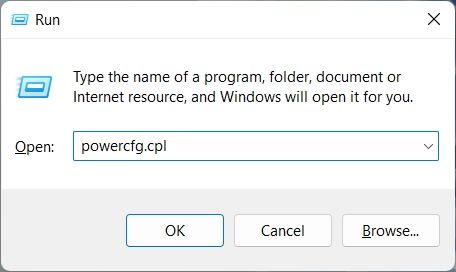
2. The Power Options window will open in the Control Panel. Here, click "Choose what the power buttons do" on the left sidebar.
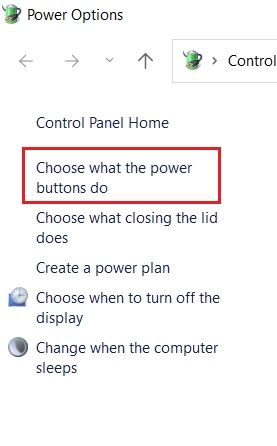
3. Now in the right pane, click "Change settings that are currently unavailable" to grant administrator permission.
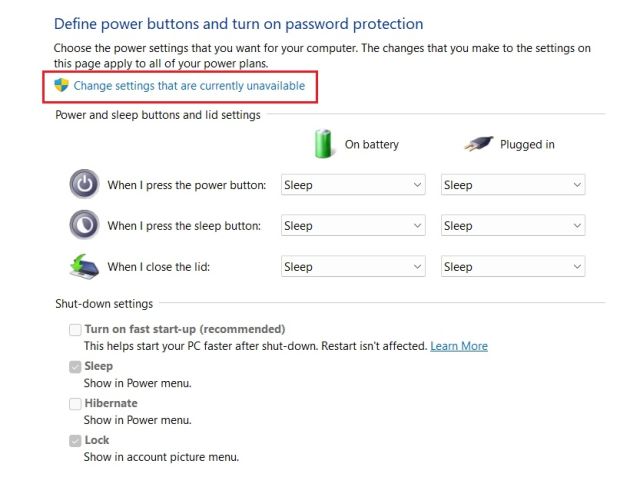
4. Finally, uncheck "Enable Fast Startup (Recommended)" to disable this feature and click "Save Changes" at the bottom. Here is how you can disable fast startup in Windows 11.
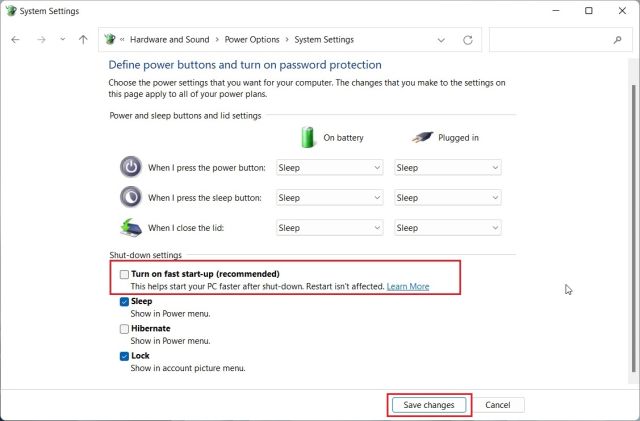
5. To enable fast startup in Windows 11, follow the steps above. Then just check the box and click Save Changes. You did it.
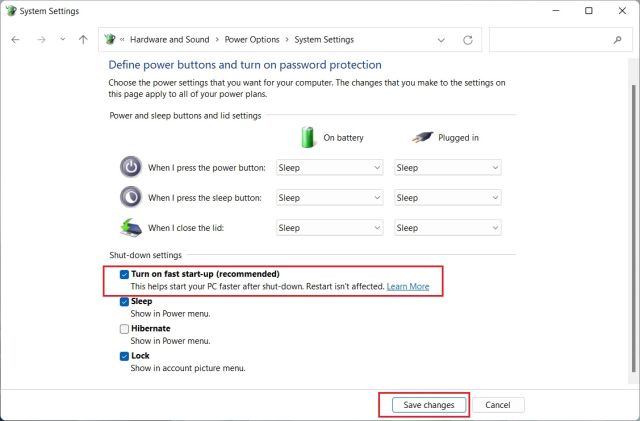
Enable or disable fast startup in Windows 11
So, these are the simple steps that you need to follow to enable or disable fast startup in Windows 11. As mentioned above, you should leave the fast startup feature enabled on your Windows 11 computer for faster booting. However, if it interferes with other programs or the dual boot process, you should disable it immediately. However, this is all from us. If you want to improve the performance of your Windows 11 PC, follow our detailed guide. And to learn more about the new efficiency mode in Windows 11, we have an in-depth explanation. Finally, if you have any questions, please let us know in the comments section below.